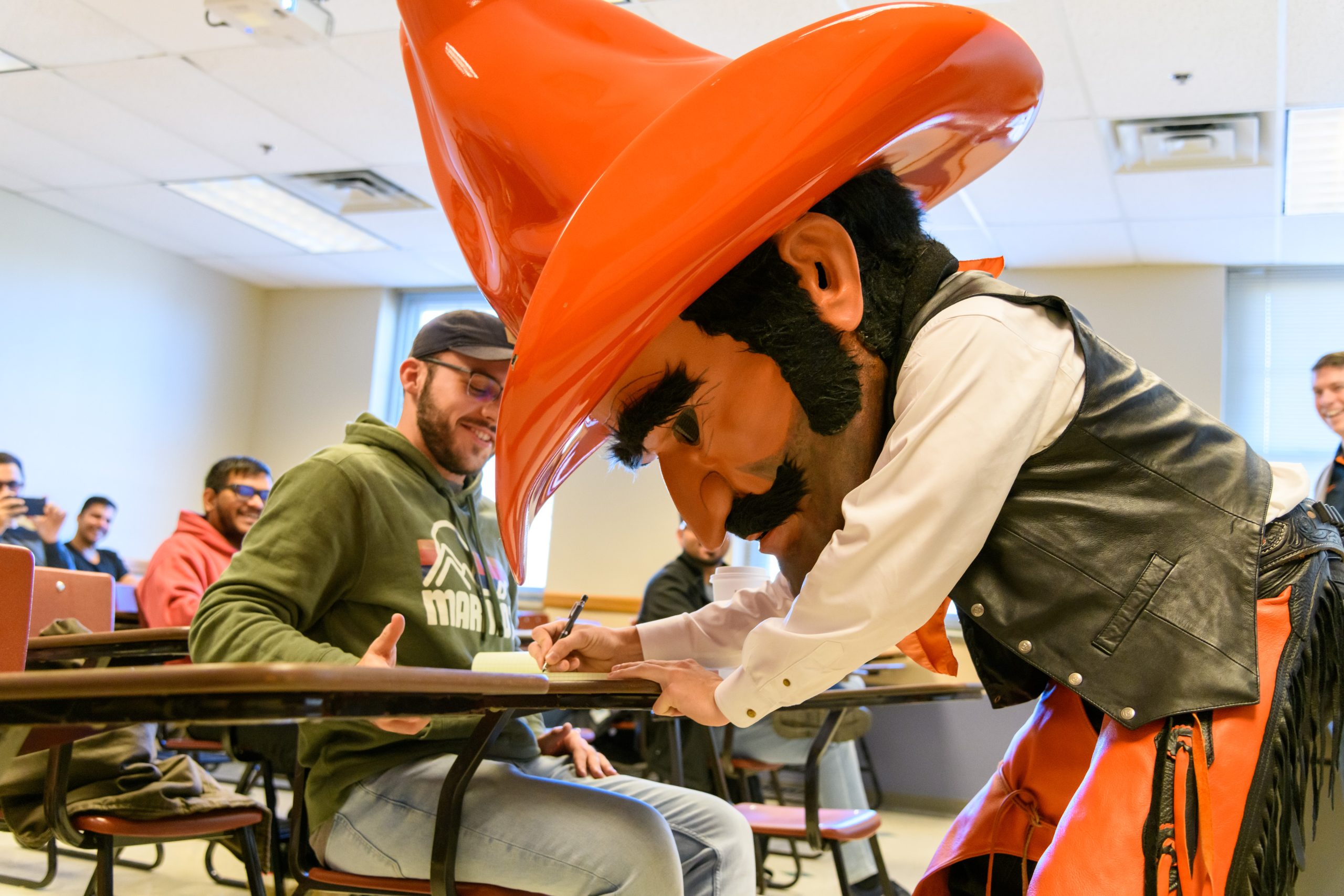7.1 Why is Organizing and Outlining Important?
Click below to play an audio file of this section of the chapter sponsored by the Women for OSU Partnering to Impact grant.

“If you don’t know what you want to achieve in your presentation, your audience never will.” -Harvey Diamond
Introduction to Organizing and Outlining
Meg jaunted to the front of the classroom—her trusty index cards in one hand and her water bottle in the other. It was the mid-term presentation in her entomology class, a course she enjoyed more than her other classes. The night before, Meg had spent hours scouring the web for information on the Woody Adelgid, an insect that has ravaged hemlock tree populations in the United States in recent years. But when she made it to the podium and finished her well-written and captivating introduction, her speech began to fall apart. Her index cards were a jumble of unorganized information, not linked together by any unifying theme or purpose. As she stumbled through lists of facts, Meg—along with her peers and instructor—quickly realized that her presentation had all the necessary parts to be compelling, but that those parts were not organized into a coherent and convincing speech.
Giving a speech or presentation can be a daunting task for anyone, especially inexperienced public speakers or students in introductory speech courses. Speaking to an audience can also be a rewarding experience for speakers who are willing to put in the extra effort needed to craft rhetorical masterpieces. Indeed, speeches and presentations must be crafted. Such a design requires that speakers do a great deal of preparatory work, like selecting a specific topic and deciding on a particular purpose for their speech. Once the topic and purpose have been decided on, a thesis statement, or central idea, can be prepared. After these things are established, speakers must select the main points of their speech, which should be organized in a way that illuminates the speaker’s perspective, or approach to their speech. In a nutshell, effective public speeches are focused on particular topics and contain main points that are relevant to both the topic and the audience. For all of these components to come together convincingly, organizing and outlining must be done prior to giving a speech.
This chapter addresses a variety of strategies needed to craft the body of public speeches. The chapter begins at the initial stages of speechwriting— selecting an important and relevant topic for your audience. The more difficult task of formulating a purpose statement is discussed next. A purpose statement drives the organization of the speech since different purposes (e.g., informative or persuasive) necessitate different types of evidence and presentation styles. Next, the chapter offers a variety of organizational strategies for the body of your speech. Not every strategy will be appropriate for every speech, so the strengths and weaknesses of the organizational styles are also addressed. The chapter then discusses ways to connect your main points and to draw links between your main points and the purpose you have chosen. In the final section of this chapter, one of the most important steps in speechwriting, outlining your speech, is discussed. The chapter provides the correct format for outlines as well as information on how to write a preparation outline and a speaking outline.

Pistol Pete found himself preparing for an informative speech about the traditions that define the spirit of OSU. The speech was an opportunity to share with his audience, composed of students, faculty, and alumni, the rich history and cherished customs of their beloved university.
First, he started with his specific purpose statement. Given the nature of his speech, he chose a specific purpose that was both audience-centered and measurable: “After hearing my speech, the audience will be able to identify specific OSU traditions that not only strengthen our community but also perpetuate our Orange Pride.”
Next, he moved on to formulating his thesis. He wanted a statement that encapsulated the essence of his speech and served as the anchor point for all the information he would present. He decided on the following: “The traditions at Oklahoma State University, steeped in history and driven by a collective spirit, are instrumental in fostering a sense of unity, instilling pride, and creating lasting memories for everyone who is part of the Cowboy family.”
With his specific purpose and thesis defined, Pete moved on to identify the three main points that would form the structure of his presentation:
- Historical Traditions: Here, Pete planned to delve into the history of OSU’s longstanding traditions, sharing the origin and evolution of customs such as the Homecoming Celebration, America’s Greatest Homecoming, the waving of the “Waving Song” after victories, and the ringing of the Old Central bell.
- Symbolic Traditions: Pete would discuss the symbolic significance of traditions like the Sea of Orange Parade and the use of the OSU Spirit Rider to lead the football team onto the field. He wanted his audience to appreciate how these traditions encapsulate the spirit of OSU and its community.
- Impact of Traditions: Lastly, Pete would address how these traditions enhance the OSU experience, foster a sense of belonging, and serve as a bonding factor for students, faculty, alumni, and fans alike.
By laying out this roadmap for his speech, Pistol Pete felt prepared and excited to share the cherished traditions of Oklahoma State University. He looked forward to not only informing his audience about these customs but also sparking a sense of pride and unity amongst his fellow Cowboys and Cowgirls.
What do you think of Pete’s planning for his informative speech? Would you do anything different?

